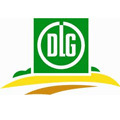 Premiering at EuroTier 2012, the Animal Welfare Information Center widens the scope of animal production issues presented at the world's foremost event for the livestock farming industry. Positioned in Hall 26 right across the DLG stand, the center will feature two daily roundtable discussions that will present opposing views by opposing views of farmers and companies on animal welfare issues, and which will be chaired by professionals from the animal welfare sector. These sessions organised by the DLG aim to stimulate discussions as well as provide the most up-to-date information on welfare issues facing livestock enterprises. Optimising livestock production in order to optimize animal production. All sessions are in German. However, information presented on boards will be in English and English speaking experts are on hand. Within the centre, livestock exhibitors will be presenting their vision for the future. An information gallery will provide extensive information on the topic of animal welfare.
Premiering at EuroTier 2012, the Animal Welfare Information Center widens the scope of animal production issues presented at the world's foremost event for the livestock farming industry. Positioned in Hall 26 right across the DLG stand, the center will feature two daily roundtable discussions that will present opposing views by opposing views of farmers and companies on animal welfare issues, and which will be chaired by professionals from the animal welfare sector. These sessions organised by the DLG aim to stimulate discussions as well as provide the most up-to-date information on welfare issues facing livestock enterprises. Optimising livestock production in order to optimize animal production. All sessions are in German. However, information presented on boards will be in English and English speaking experts are on hand. Within the centre, livestock exhibitors will be presenting their vision for the future. An information gallery will provide extensive information on the topic of animal welfare.
The Animal Welfare Information Center will be staffed by experts on animal welfare issues who will be on hand to answer any queries from visitors throughout EuroTier 2012. Visitors to the center are welcomed to participate in any of the roundtable discussions and pose questions on welfare issues to the staff on hand. The following topics will be presented at the roundtable.
Background notes on animal welfare and EU
EU animal welfare legislation aims to protect the well-being of food producing animals by recognising first and foremost that animals are sentient beings. This stipulates that farm operators meet the minimum welfare requirements for their animals and ensure that any unnecessary pain or discomfort is avoided. The EU animal welfare strategy covers the protection of all farm animals kept for food as well as for skins, hide and wool and other purposes.

Largely driven by consumer interest in the handling of animals raised for food and other consumption and pleasure purposes, animal welfare is an issue that livestock enterprises cannot ignore in the long haul. Studies have also shown that animal welfare does not necessarily increase the cost of animal production as well maintained animals are more efficient and provide higher quality animal products. A topic that has garnered increasing interest in society today, animal welfare issues have repercussions on production practices that will continue to influence farming trends significantly.
Within the EU, measures introduced as early as the late-1990s have to be adopted by member states before a given deadline. As of 1 January 2012, conventional cages for layers have been phased out, based on a directive adopted in 1999. These have to be replaced by cage systems providing a minimum of 750 sq cm of area per hen and come with nests and perching spaces. To avoid the similar overcrowding of broilers, a maximum stocking density of 33kg per sq metre was implemented in June 2010. Calves after eight weeks of age must be released from confined areas in all cattle holdings, be untethered, and receive rations containing sufficient iron and fiber content. The directive for swine includes measures to improve the quality of flooring, living spaces and access to feed and water. In addition to the living conditions and nutritional requirements of farm animals, welfare regulations are also imposed on their transport and slaughter.
October 22, 2012 - DLG


